
Johor Bahru is the capital of the state of Johor, Malaysia. It is located along the Straits of Johor at the southern end of Peninsular Malaysia. The city has a population of 663,307 within an area of 220 km2. Johor Bahru is adjacent to the city of Iskandar Puteri and Pasir Gudang, together with their surrounding areas anchoring Malaysia's third largest urban agglomeration, Iskandar Malaysia, with a population of 1,638,219.
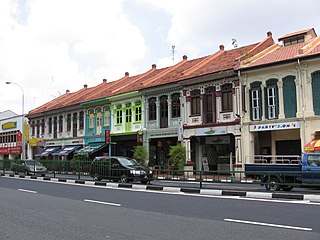
Katong, also known as Tanjong Katong, is a residential neighbourhood in the eastern portion of the Central Region of Singapore, within Marine Parade planning area. It used to be located by the sea, but land has been reclaimed all the way to East Coast Park to provide more land for housing and recreational purposes due to the shortage of land in the late 1960s after Singapore gained independence.

Geylang is a planning area and township located on the eastern fringe of the Central Region of Singapore, bordering Hougang and Toa Payoh in the north, Marine Parade in the south, Bedok in the east, and Kallang in the west.

Chinatown, Singapore is a subzone and ethnic enclave located within the Outram district in the Central Area of Singapore. Featuring distinctly Chinese cultural elements, Chinatown has had a historically concentrated ethnic Chinese population.
Tiong Bahru is a housing estate located within the Bukit Merah Planning Area, in the Central Region of Singapore. Tiong Bahru was constructed in the 1920s by the Singapore Improvement Trust, the predecessor to the Housing Development Board and an entity of the British colonial authority providing mass public housing in Singapore and is the oldest housing estate in Singapore. The main estate consists of 30 apartment blocks with over 900 units of two to five rooms. There are also high-rise Housing and Development Board (HDB) flats and condominiums along Boon Tiong Road, Jalan Membina and Kim Tian Road which surround the main estate.

Chinese Singaporeans or Singaporean Chinese are Singaporeans of Chinese descent. They constitute approximately 76.2% of the country's population, making them the largest ethnic group in Singapore. Outside Greater China, Singapore is the only country in the world where ethnic Chinese constitute a majority of the population and they are well represented in all levels of Singaporean society, politically and economically.

Wenchang is a county-level city in the northeast of Hainan province, China. Although called a "city", Wenchang refers to a large land area in Hainan - an area which was once a county. The urban center and the seat of government of Wenchang is officially known as "Wencheng Town" (文城镇), which is also colloquially referred to as Wenchang City.
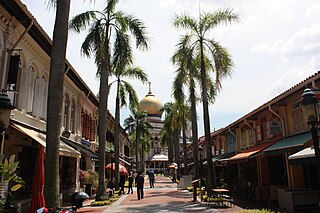
Kampong Glam is a neighbourhood and ethnic enclave in Singapore. It is located north of the Singapore River, in the planning area of Rochor, known as the Malay-Muslim quarter.

Singaporean cuisine derived from several ethnic groups which have developed through centuries of political, economic, and social changes of this cosmopolitan city-state.
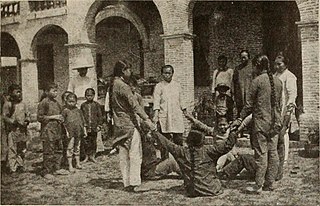
The Hainan people, also known as Hainanese, Hainams or Hainam nang, are an East and Southeast Asian people and a subset of the Han Chinese who originate from the island of Hainan, the southernmost and smallest province in China.
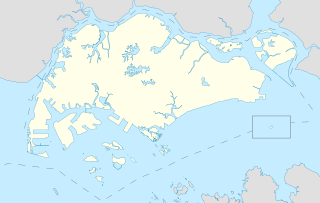
Bugis is an area in Singapore that covers Bugis Street now located within the Bugis Junction shopping mall. Bugis Street was renowned internationally from the 1950s to the 1980s for its nightly gathering of transvestites and transsexuals, a phenomenon that made it one of Singapore's most notable destinations for foreign visitors during that period.
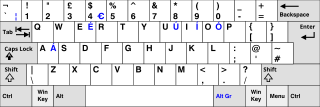
A multitude of languages are used in Singapore. It consists of several varieties of languages under the families of the Austronesian languages, Dravidian languages, Indo-European languages and Sino-Tibetan languages. According to the Constitution of Singapore, the national language of Singapore is Malay, which plays a symbolic role, as Malays are constitutionally recognised as the indigenous peoples of Singapore, and it is the government's duty to protect their language and heritage. The constitution also states that the four commonly used languages of Singapore are English, Chinese, Malay and Tamil, with the lingua franca between Singaporeans of different races being English, the de facto main language. Singaporeans often speak Singlish among themselves. Singlish is an informal, colloquial form of English that is used in Singapore. Linguists define it formally as Singapore Colloquial English. Singdarin is also used, which is similar to Singlish except that it is based upon Mandarin.

Joo Chiat Road is an arterial road and a residential conservation area in the eastern part of Singapore, and is located between Geylang Serai and Marine Parade Road.

The Japanese Cemetery Park is a Japanese cemetery and park in Hougang, Singapore. It is the largest Japanese cemetery in Southeast Asia at 29,359 square metres, consisting of 910 tombstones that contain the remains of members of the Japanese community in Singapore, including young Japanese prostitutes, civilians, soldiers and convicted war criminals executed in Changi Prison. It was gazetted as a memorial park by the Singapore government in 1987.

Prostitution in Singapore has existed throughout the country's history. Its practice is legal, one of the only few countries in Asia and the world to do so. However, various prostitution-related activities such as public solicitation, living on the earnings of a prostitute, as well as maintaining an unlicensed brothel are criminalised. In practice, the Singapore Police Force (SPF) unofficially tolerates and monitor a limited number of brothels.

Wenchang chicken is a type of chicken breed and a chicken dish from the Wenchang city area in the island province of Hainan, China.
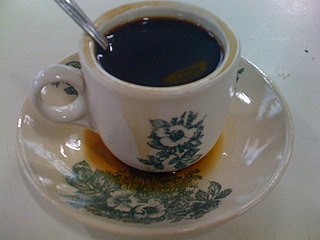
Kopi is a type of traditional coffee local to Singapore and Malaysia. It is a highly caffeinated black coffee served with milk and sugar. This drink originates from Peninsular Malaysia, with Hainanese roots. It is also otherwise known as Nanyang coffee. Nanyang means ‘South Sea’ in Mandarin, and usually references to Southeast Asia. The Singapore coffee is recognized to be culturally significant and part of the everyday diet and lifestyle of many Singaporeans. It is habitual for Singaporeans of all ethnicities and ages to customize their Kopi using the Hokkien dialect. The coffee is also popular in Malaysia. The Singapore coffee is distinct from other types of coffee due to its roasting process and preparation technique involving a variation of the Torrefacto method. It is usually served in coffee shops, Hawker centres and kopitiams. There are also many commercial brands that have emerged specializing in serving the traditional coffee with pairings of local fare such as kaya toast and laksa. Concerns over the elevation of diabetes cases, have caused the creation of government-led nationwide campaigns in Singapore to reduce sugar intake, especially with regard to sweet drinks or drinks that add sugar such as Kopi O. This has the potential to affect the consumption of Kopi O. The significance of Kopi in Singapore’s culture can be found in greater detail in Singapore’s only Kopi museum.
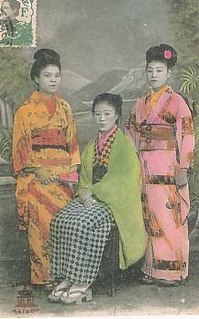
Karayuki-san (唐行きさん) was the name given to Japanese girls and women in the late 19th and early 20th centuries who were trafficked from poverty-stricken agricultural prefectures in Japan to destinations in East Asia, Southeast Asia, Siberia, Manchuria, British India, and Australia, to serve as sex workers.

Hainanese chicken rice is a dish of poached chicken and seasoned rice, served with chilli sauce and usually with cucumber garnishes. It was created by immigrants from Hainan in southern China and adapted from the Hainanese dish Wenchang chicken. It is considered one of the national dishes of Singapore and is most commonly associated with Singaporean cuisine. The dish is also seen throughout Southeast Asia, particularly Indonesia and Malaysia where it is a culinary staple.
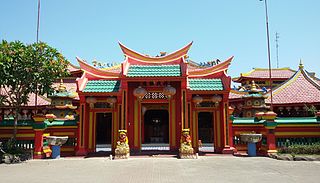
Shui Wei Sheng Niang is a Hainan goddess that is worshiped by the Hainanese around the world, especially they who lives on the waterfront area. She is often worshipped with Mazu and 108 Xiongdi Gong. Her cult was spread along with Hainanese diaspora in the end of Qing dynasty. Her birthday is celebrated on 15th day of the 10th month of the lunar calendar.




















